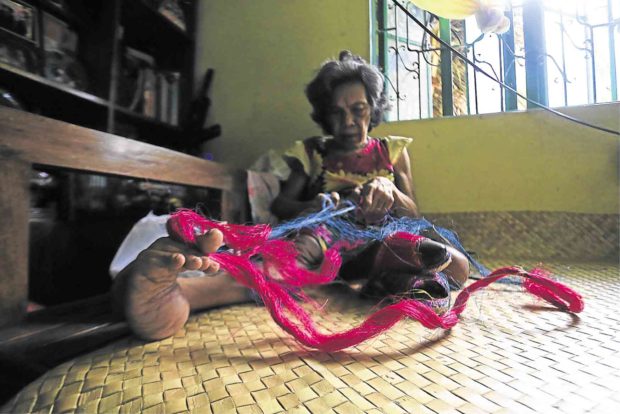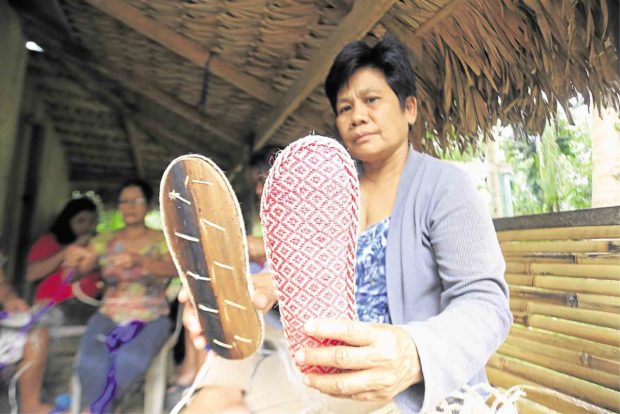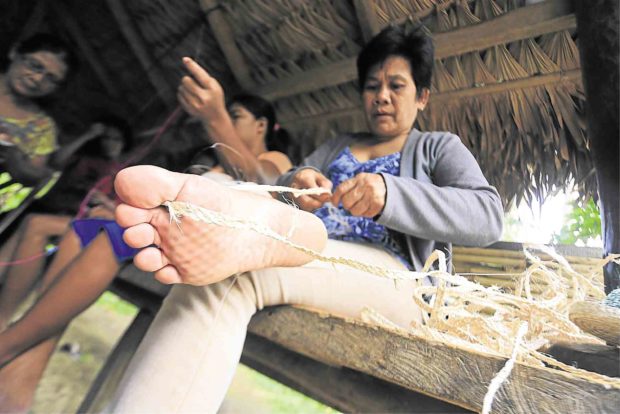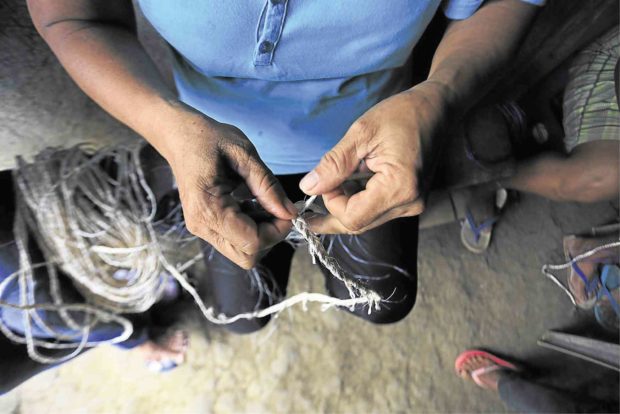Ancient weaving design reaches the toes
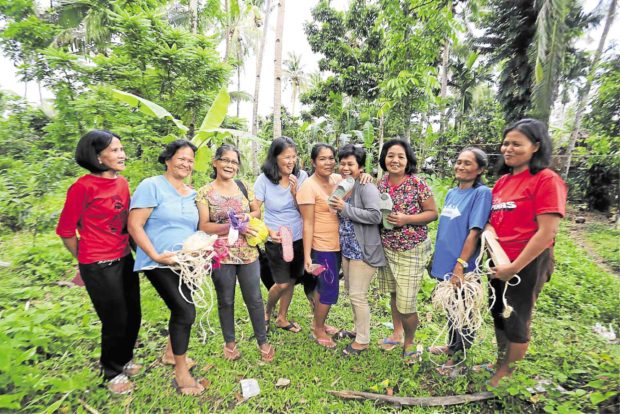
EXPERT WEAVERS The women of Gubat town in Sorsogon province, led by Josefina Epino, make sure that the indigenous weaving design “salanigo” will live on through the abaca slippers that they produce by hand. —PHOTOS BY MARK ALVIC ESPLANA
GUBAT, Sorsogon — For decades, Josefina Epino has devoted herself to transforming an ancient native weave design usually found in “sawali” (woven bamboo) walls into Gubat town’s premier product.
Now 78, Epino, fondly called Lola Pina by residents of Barangay Manapao here, has introduced the design, called “salanigo,” to native slippers. “I found the original design plain and dull for slippers. I thought it would not buy the interest of people in the poblacion (center),” she said in Gubatnon.
The traditional sawali wall designs, Epino said, “appeared more sophisticated and modern.” She uses hand-stripped abaca fibers and her hand-weaving skill to produce the intricate weave.
Salanigo has been around for centuries in Bicol and Samar. It has an “under-two-and-over-two” pattern that creates an elaborate diagonal or twilled weave.
Community of weavers
Article continues after this advertisementEpino comes from a family of weavers and abaca fiber strippers in Manapao, where weaving has been a family enterprise. The women weave native slippers from fiber stripped by their husbands. The children help segregate and choose the finest fibers.
When she was 2 years old, Epino was afflicted with polio. She would be carried by her father piggyback during her childhood to the nearest primary school through a 2-kilometer uphill walk.
She was a bright student, but she had to stop going to school due to mobility difficulties. She spent her days inside the house, joining her family in weaving slippers made of abaca fiber, coconut palms and “karagumoy,” a pineapple-like grass that grew abundantly in the town.
In 1967, she got bored with the usual weaving design and decided to incorporate a different one. Since she remained single and childless, she taught her nieces and other relatives the intricacy of salanigo hand-weaving.
One of her nieces passed on the design to women weavers in Barangay Sta. Ana, also in Gubat.
Salanigo slippers and their sophisticated style are in demand, according to Lerma Pura, a weaver in Sta. Ana. But she said the homebased industry was being threatened by the inadequate supply of abaca raw materials and the lack of modern equipment for commercial production.
Fewer artisans
The number of artisans has also declined. Children of the current crop of weavers have opted for more sustainable sources of livelihood that require little handiwork and immediate income.
Yolanda Patriarca, municipal agriculture officer, said abaca production greatly affected following widespread infestation of abaca plants by three deadly viruses—bunchy-top, mosaic and bract mosaic—in the upland villages of Togawe, Bentuco and Tigkiw.
Abaca, also known as Manila hemp, is the world’s strongest natural fiber. Its principal uses include pulp and paper, cordage and twine, fiber crafts, textile and fabrics, furniture, composites and construction materials.
Mayor Sharon Rose Escoto cited the need for the recovery of the abaca industry and hand-made products, particularly salanigo slippers.
“There is no better time than now in reviving Gubat’s century-old industry. Its revival would not only establish an industry indigenous to the town but also help alleviate poverty in the upland barangays of Gubat as it would generate jobs for the people,” Escoto said. —CONTRIBUTED
